This review of the Sony Pulse Elite is going to take a different angle. I’m not primarily using them for gaming. What drew me to the Pulse Elite were the planar magnetic drivers—developed by Audeze —and the PlayStation Link dongle, which offers more stable, lower-latency connectivity to my laptop than Bluetooth, without needing a physical cable.
There are already plenty of great reviews out there focused on PS5 gaming, written by dedicated gamers who know how these headphones actually perform in that ecosystem. My goal was different: I wanted to find out if the Pulse Elite could be a true all-rounder—a Goldilocks headphone that’s good enough for gaming, office work, and music listening, without needing to buy three separate headsets.
Gaming and office work share a lot of the same audio needs: clear sound quality, a reliable microphone, long-term comfort, and effective noise cancellation. Where they differ is in priorities—gaming places a higher emphasis on low latency for real-time responsiveness, while office use is generally more forgiving in that regard.
However, office work often demands seamless multipoint connectivity so I can take Zoom calls on my MacBook and switch to phone calls on my cell without juggling headphones.
The current frontrunner in the search for the ultimate Goldilocks headset is the Audeze Maxwell—now under the Sony umbrella—retailing for $299 USD. With the Pulse Elite featuring planar magnetic drivers designed by Audeze’s own team, expectations for sound quality were naturally high. But the real question is: can a headset at half the price truly challenge the Maxwell’s crown?
Unboxing & Design
The first thing that stood out was the size of the packaging. The Pulse Elite is a large headphone, and its L-shaped headband, which flows into the gimbals and then the microphone, adds to its overall footprint. For frequent travelers, this is a definite drawback—the headphones take up a significant amount of space in a backpack or laptop bag.
The kit includes the usual essentials: manuals, the PlayStation Link dongle, a charging hanger, a 3.5mm auxiliary cable, and a USB-C charging cable. The colorway features a blend of white and black, with the outer surface of the headband sporting a slightly gray-tinted white and the inner surface finished in matte black.
The ear cups are finished in matte black, echoing the minimalist aesthetic. The black-and-white theme continues subtly on the charging hanger, while the included cables and PlayStation Link dongle are all matte black—Sony kept the color scheme tasteful without overdoing it.
The charging hanger is a unique accessory, featuring a hook that aligns with charging pads on the top of the headband. It cleverly uses gravity to keep the headphones securely in place while charging.
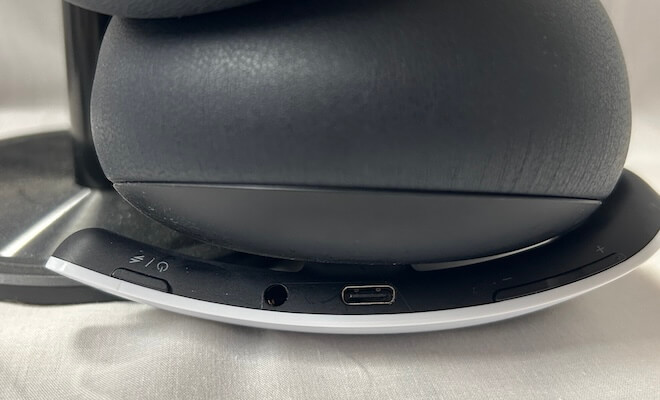
Controls
The underside of the hanger includes a USB-C port for power input, while the back features a mounting plate that can be secured with screws or adhesive tape to a desk or wall. For those who prefer not to hang the headphones to charge, there’s also a USB-C port located on the right side of the headband where it connects to the ear cup.
All physical controls are located on the right side of the headband. The volume up and down buttons are positioned toward the rear, just behind the USB-C charging port. In front of the port, you’ll find a 3.5mm auxiliary input, while the power and pairing button sits near the end of the arm.
A single LED indicator is positioned at the tip of the right arm, but it’s tucked far enough back that it’s out of view when wearing the headphones. The left arm has no physical controls but features an extendable boom microphone. In quiet settings, I could often get by with the mic retracted, but nearly everyone I spoke to said my voice came through clearer and more natural when the boom was fully extended.
The ear cups are mid-sized, but the pads appear larger than they actually are due to the way they overlap the cups by about ¾ inches, giving the impression of huge pads and relatively small cups. The pads are glued in place, meaning they’re not easily removable or replaceable if needed.
Despite the seemingly large outer dimensions, the ear cups offer a relatively small amount of space inside, with my ears making contact with the protein leather at both the bottom and rear. While not uncomfortable, it’s worth noting that those with larger ears may find the fit tight and should consider auditioning these headphones before purchasing.
Passive isolation is modest with the Pulse Elite. Even with the headphones on and sound off, I can still hear keyboard noises while typing, which was surprising given that the Pulse 3D offered a bit more passive isolation than the newer Pulse Elite.
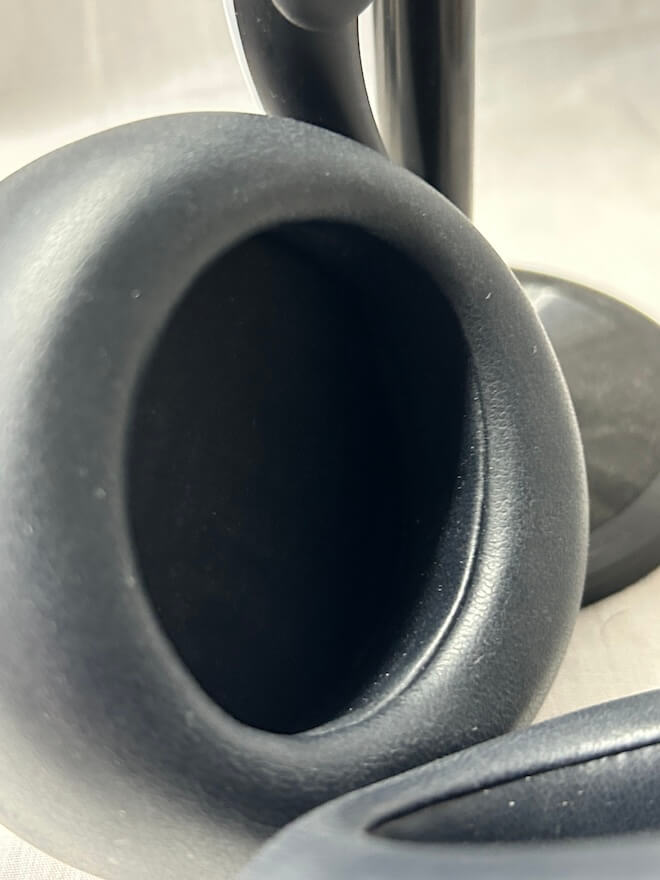
Connectivity
Weighing in at a moderate 347 grams, the Pulse Elite features a suspension-style headband that does a good job of distributing the weight evenly, ensuring that they remain comfortable even during extended wear.
For comparison, the Pulse 3D is lighter at 293 grams, while the AirPods Max weighs in at 384 grams and lacks a suspension headband. So, while the Pulse Elite is not the lightest headphone I’ve tried, it does a better job of distributing its weight compared to some competitors and is far from being the heaviest either.
Connectivity options include Bluetooth, the PlayStation Link dongle, and a 3.5mm auxiliary cable. Bluetooth is limited to SBC and lacks multi-point support, which is unfortunate. As a result, if you’re connecting both devices simultaneously, you’ll need to use the PlayStation Link for your PC and Bluetooth for your phone.
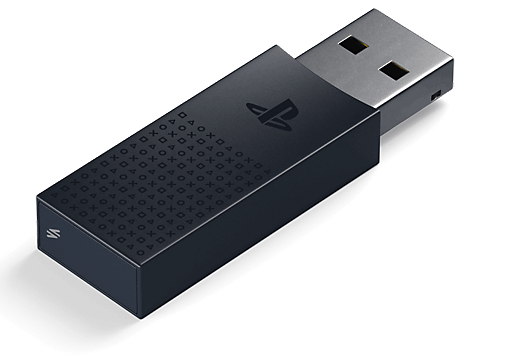
A nice feature is that phone calls can interrupt PC audio without needing to switch between devices. Just remember to mute your mic in Teams or Zoom, or both sources will pick up half of your conversation.
The PlayStation Link is impressive as it offers uncompressed, lossless audio over Wi-Fi, giving it an edge over most Bluetooth codecs. Even “lossless” Bluetooth codecs typically involve some form of compression, making the PlayStation Link the first truly non-compressed, lossless option in gaming headphones that I know of. Sony also sells additional PlayStation Link adapters, so since you’ll likely need one for both your PC and PlayStation, it’s a good idea to order a spare.
Another limitation is the lack of Fast Pair on both Android and Apple devices. While I can understand the omission of AptX, the absence of AAC and Sony’s own LDAC is harder to forgive, especially given the large market for Android and iPhone users. The Pulse Elite also struggled at times to maintain a stable Bluetooth connection, even at modest distances, making the lack of better codecs more apparent.
The PlayStation Link performed better overall and would be my first choice for streaming music to the Pulse Elite. However, who wants to use a Lightning-to-USB-A or USB-C-to-USB-A adapter to connect the PlayStation Link to their phone for a stable connection? I tested this setup with a Samsung S24, and it worked with the adapter, but it does require your phone to have an awkward “tail.”
Another important point is that the Sony app available in both the Android and Apple stores does not support the Pulse Elite. This limits functionality when using the headphones with devices other than the PlayStation 5, as you’ll be restricted to the onboard physical controls. Unfortunately, this means you can’t adjust features like the EQ unless you have a PlayStation to make those changes.
Once adjusted, the settings are stored in the headphones and will carry over to other devices. However, they can only be set or modified when connected to a PlayStation. Side tone, which is crucial for phone calls and chat applications, is also only adjustable via a PS5. This means that those without a PS5 either have to settle for the default settings or invest in one to make those adjustments.
Battery Life
Battery life is listed at 30 hours, but in my experience, that’s a conservative estimate. I consistently managed to get over 40 hours of use as long as the volume was kept within reason. When the battery does run out, it takes about two hours to fully recharge using a standard 5V 500mA USB charger.
However, with higher amperage chargers, the charging time can be reduced, and quick charge is supported. A 10-minute charge with a 2.1A charger will give you about two hours of listening time.
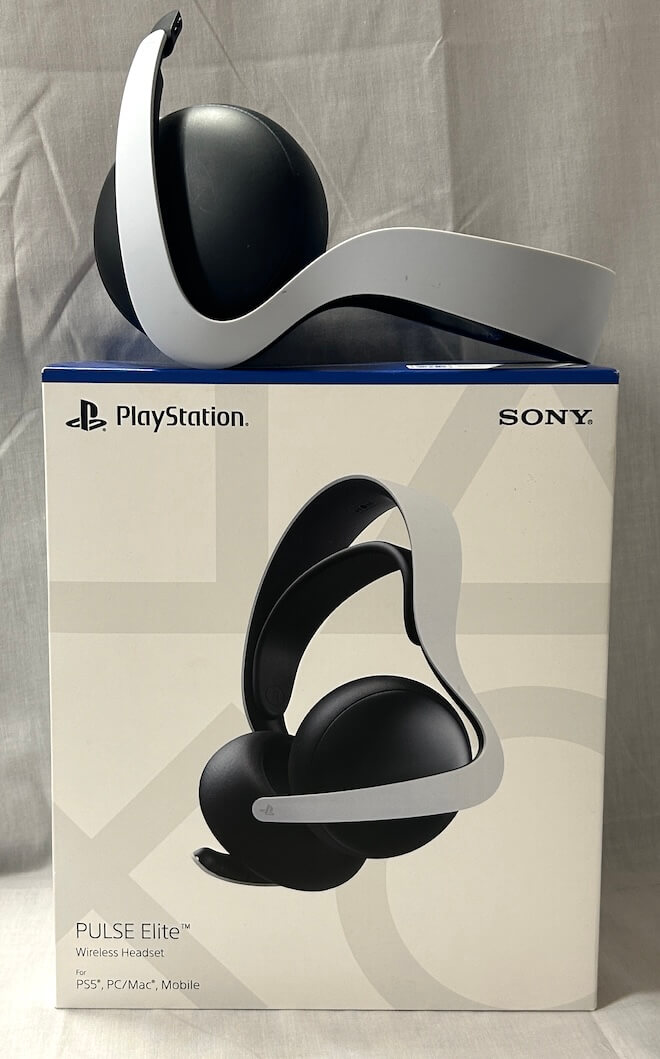
Sony & Debunking Rumors
I mentioned Audeze earlier in the review, and this is where I expect their expertise to really shine. Sony, with its deep audio roots, has a legacy that dates back to its beginnings as a radio repair shop in post-WWII Japan. The company’s first major release in the U.S. was the TR-63 radio, which launched in 1957, marking the start of their long journey in the audio industry.
Audeze’s expertise lies in high-end headphones, with the company designing and patenting numerous planar magnetic and electrostatic transducers. In 2023, Sony acquired Audeze at the peak of the Maxwell’s popularity, allowing Audeze to benefit from greater economies of scale while giving Sony access to Audeze’s patents and driver technology. The drivers in the Pulse Elite are a direct result of this partnership, featuring a planar magnetic design similar to that of the Maxwell.
When asked about the exact specifications, Sony remained tight-lipped, so details such as the nominal impedance and sensitivity of the transducers are not available. However, I was able to physically measure one of the drivers, and it appears to be the same 90mm size used in previous Audeze models.
Any suggestion that these drivers might be the same as those in earlier models is purely speculative. At the very least, it’s safe to assume that these are not manufactured at Audeze’s California facility, where most of their transducers are produced.
For those DIY enthusiasts out there, the Pulse Elite could be the most affordable way to get your hands on planar magnetic drivers that incorporate Sony and Audeze patents. If you’re looking to build your next set of custom headphones, this could be a great starting point. Could the Pulse Elite become the next Fostex T50rp for the DIY community? Only time will tell.

Listening
The sub-bass provides a decent rumble, but it’s not particularly elevated and starts to roll off around 35Hz. This behavior is typical of planar magnetic drivers, as their limited excursion capabilities make it harder for them to reproduce the deep sub-bass that dynamic drivers can achieve. However, the bass itself remains tight and well-textured, offering more detail than you’d usually find in dynamic driver models at this price point.
The mid-bass follows suit, providing good clarity and detail while maintaining a near-neutral level. It’s clear that Sony prioritized a balanced sound signature rather than boosting the lows for added impact.
The transition from the mid-bass to the lower midrange is smooth, with no noticeable bleed or masking. Lower voices are presented with good weight and natural timbre. As the sound moves up through the mids, there’s a subtle emphasis that adds a bit of energy, particularly to strings, giving them the extra brightness needed to sound accurate. Guitars have a satisfying growl, and piano tones are generally quite faithful to their real-life counterparts.
Female vocals are slightly more forward compared to male vocals, but they manage to avoid the nasal or harsh quality that often accompanies a lift in the upper mids. This results in a clean and balanced midrange that’s both detailed and enjoyable.
The treble has a bit of grain, particularly after the lift in the upper mids, but it then experiences a few dips and peaks. Notably, there’s a drop around 4kHz, followed by a spike around 6kHz, and another between 10-11kHz, which can make the sound slightly brighter than some might prefer. The snare hits with good snap, though the rattle feels a bit off due to that 4kHz dip. Cymbals, however, benefit from the 6kHz peak, offering a pleasing tone without sounding metallic or overly clicky.
There’s ample top-end presence that contributes to air and sparkle, and at times, the Pulse Elite even adds a slight sizzle at the very top. While this treble presentation is not entirely smooth, it still has an exciting and engaging character, especially for those who enjoy a bit of added brightness in their sound.
The soundstage on the Pulse Elite is well-proportioned, offering a larger feel than many other closed-back gaming headphones, which I attribute to both the planar magnetic drivers and the relatively low level of passive isolation. The Pulse Elite doesn’t do much to block out external noise, but that open feeling contributes to a more expansive sound.
Instrument separation is above average for headphones in this price range, and the imaging is impressively precise—again, considering the $150 price point. This headphone offers a solid sense of space and clarity, making it enjoyable not just for gaming, but also for music and other audio experiences where accurate positioning is key.
Testing the microphone performance, the Pulse Elite does a commendable job of filtering out background noise. While it’s clear that the recordings I made with various ambient sounds were processed and slightly altered in terms of natural vocal timbre, the microphone still excelled at isolating my voice.
The result was clear audio, where nothing was unintelligible, even with distractions in the background. For gaming or calls, it provides more than enough clarity for communication, making it a solid choice for those who prioritize mic performance in addition to sound quality.
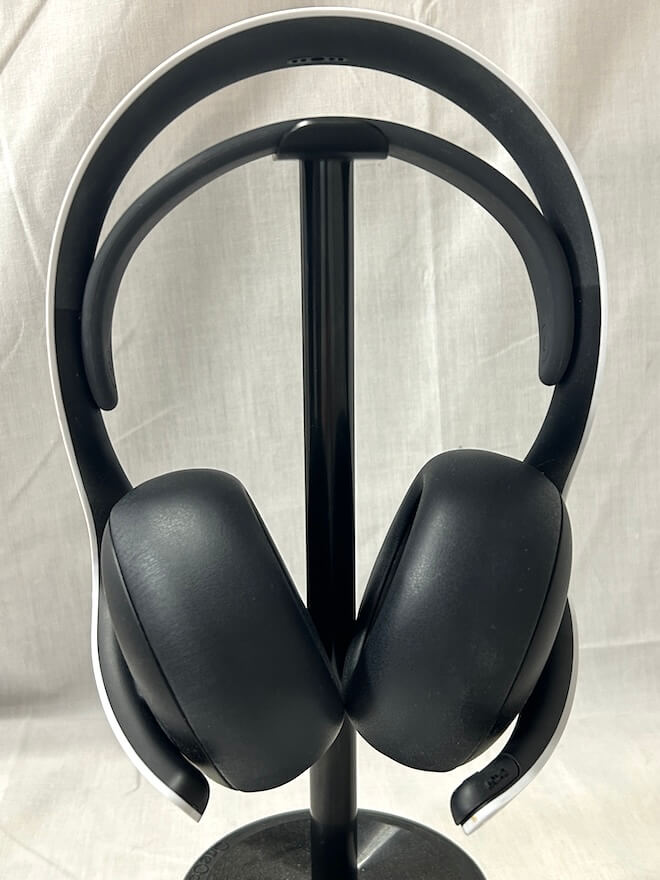
The Bottom Line
I had wondered if the Pulse Elite might take some of the market share from the Audeze Maxwell, given that both feature Audeze drivers and are designed with gaming in mind. The short answer is no, the Pulse Elite isn’t likely to overshadow the Maxwell.
The Maxwell offers superior codec support, deeper bass, and more control options for various devices like PCs, phones, and tablets. While the PlayStation Link on the Pulse Elite is a standout feature, providing lossless audio over Wi-Fi, the Maxwell also supports similar features and adds advanced codec support like LC3plus, LE Audio, and LDAC.
Additionally, while 40+ hours of battery life on the Pulse Elite is impressive, it’s still not on par with the Maxwell’s 80-hour runtime. These factors explain why the Maxwell comes in at double the price of the Pulse Elite, making it clear why it’s a more premium offering in comparison.
That being said, for $150, the Pulse Elite is an outstanding headphone, especially if you own a PS5. It’s still a very solid option even if you don’t, but it loses some of its appeal without app controls on PC, iPhone, or Android.
The sound, expectedly from Audeze, exceeds what you’d typically expect at this price point, offering a more neutral and natural profile than most gaming headphones. The Pulse Elite would make an excellent office headset that can seamlessly double as a gaming headphone after hours, making the $150 price tag feel even more justified.
Considering the impressive sound quality and value for the price, I wouldn’t be surprised if some enterprising DIY enthusiasts are already envisioning custom headphones using the Pulse Elite’s drivers, much like how Mr. Speakers (Dan Clark Audio) and ZMF built their legacies.
Pros:
- Lossless uncompressed audio via Wi-Fi (PlayStation Link).
- Excellent near-neutral sound signature.
- Great battery life, often exceeding the advertised 30 hours.
Cons:
- Bluetooth limited to SBC, with occasional connection drops.
- Requires PS5 to manage some settings; no App support for iPhone/Android.
- Poor passive isolation.







